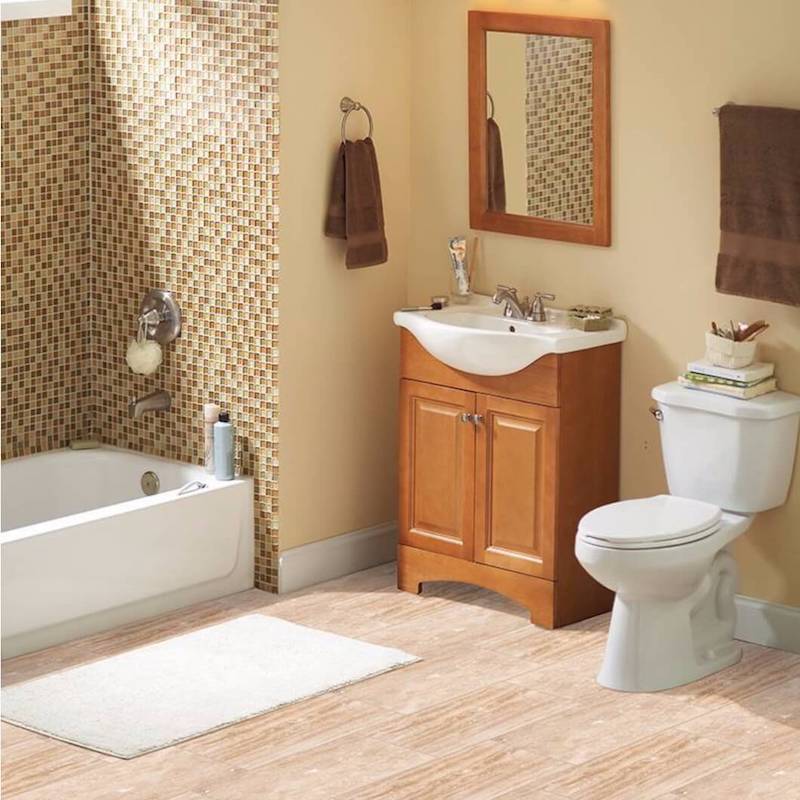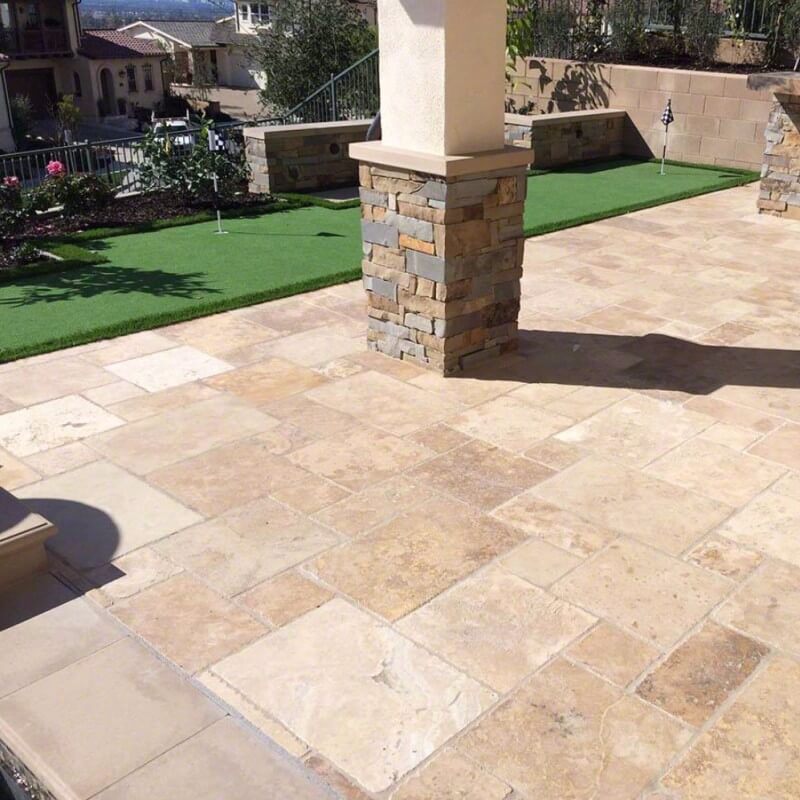Tips From The Trade: All The Pros And Cons Of Travertine Explained
July 29, 2017.jpg)
Travertine is a natural stone with a rustic charm that’s hard to resist. It’s actually a type of limestone that forms around mineral spring deposits. The natural beauty comes in various earth tones and is available in polished, honed, and tumbled finishes.
While it’s commonly used for flooring, you can also feature versatile travertine tile in a bathroom shower, a kitchen countertop and backsplash, or even a garden pathway.
However, like any mined material, travertine has innate characteristics that may mean it isn’t the right fit for every homeowner. To help you decide if you should install this natural stone in your home, we break down four perks and four quirks of travertine tile.
Pros of Travertine Tile
.jpg) Featured: Machu Picchu Travertine Tile
Featured: Machu Picchu Travertine Tile
#1. Unique Style
If you’re looking for a one-of-a-kind material to use for your installation, then travertine may be just for you. As one of the oldest building materials available, travertine adds a sense of reserved dignity and sophistication to your space. Some polished travertine tiles even look similar to marble or granite.
Whether you choose shades of cream and beige, hues of gold and brown, tones of gray, or vibrant reds, your design will feature individual works of art fashioned by Mother Nature herself.
#2. Very Durable
Travertine tile is an extremely hard material that can stand up to high traffic. It’s also water and moisture resistant, making it perfect for indoor or outdoor wet areas. And you won’t have to worry much about it scratching, chipping, or cracking, either.
Naturally, time will give travertine a more weathered look, but this can actually add to its distinct character. Be aware that tile with a honed or polished finish may show scratches more easily than a tile with a tumbled finish.
 Featured: Caramel Travertine
Featured: Caramel Travertine
#3. Eco-Friendly
This natural resource, which requires no manufacturing processes, is both recyclable and biodegradable. If you’re interested in upcycling, you can even try to find salvaged pieces of tile from an old installation for your new project.
#4. Easily Repaired
Although travertine is a strong stone, it may be susceptible to damage over years of wear and tear. But since you’re using tiles, removing and replacing a broken piece is a piece of cake! No one will even know. Purchase and keep a few extra pieces on hand. That will make repairs even easier when the time comes, and your tile will match as closely as possible.
Cons of Travertine Tile
 Featured: Walnut Vein Cut Travertine
Featured: Walnut Vein Cut Travertine
#1. Expensive
Installing travertine can be somewhat expensive. While the price point falls somewhere in the middle as far as natural stone goes, it can be a bit more of an investment when compared to some other tile flooring options. Remember that in addition to the actual tile purchase, you also have to factor in the cost of adhesives, grout and labor.
#2. Tedious Maintenance
Natural travertine has many holes, making it a very porous material. As a result, the stone can get stains more easily from spills, especially from acidic substances like orange or lemon juice. To combat stains, use a dual sealing treatment using a penetrating sealer, followed by a barrier surface sealer during the installation process.
Your tiles will also need to be resealed periodically. When cleaning your flooring tile, stay away from cleaners with vinegar or salt, because these can leave a permanent stain.
 Featured: Picasso Travertine
Featured: Picasso Travertine
#3. Heavy Materials
Your installation will probably take time, because travertine is quite heavy. And if you’re not able to transport them yourself, you may be charged a higher fee from a contractor to move them for you. Because of their heft, travertine installation will take longer, and you might be limited to using them only on the first floor.
#4. Cold Floors
Travertine doesn’t retain heat well, so when you step barefoot onto your tile on a cold morning, you’ll notice the chill immediately. Of course you could bundle up with some warm socks or slippers, or you could also add some area rugs to help visually and physically warm up the space.
 Featured: Tuscany Chateaux Travertine
Featured: Tuscany Chateaux Travertine
Now that you know more about some of the perks and quirks of this natural stone, you’ll want to think carefully about where to use travertine tile in your home.
And for even more installation ideas using travertine pavers and tile, check out the outdoors in MSI’s inspiration gallery.